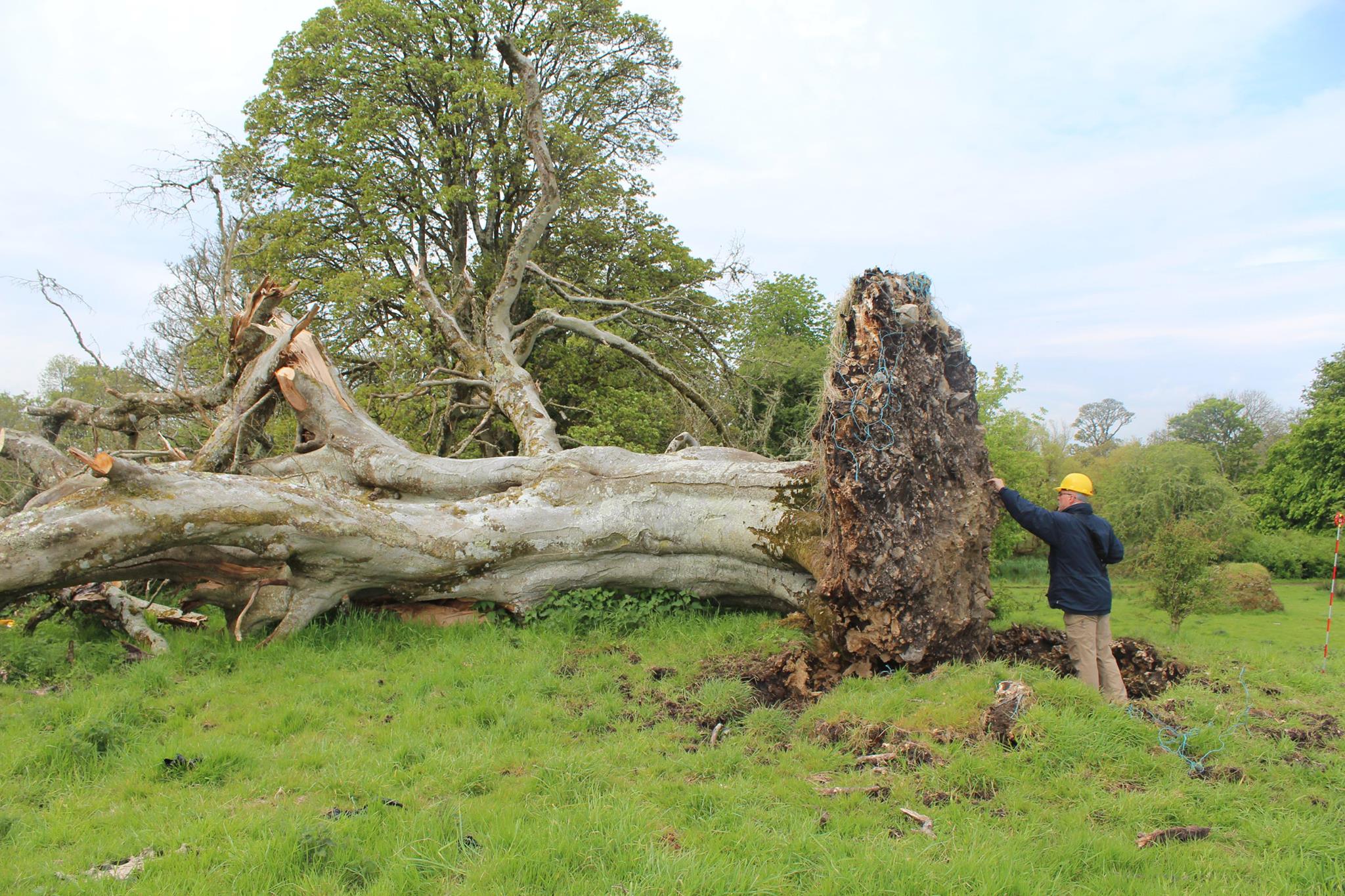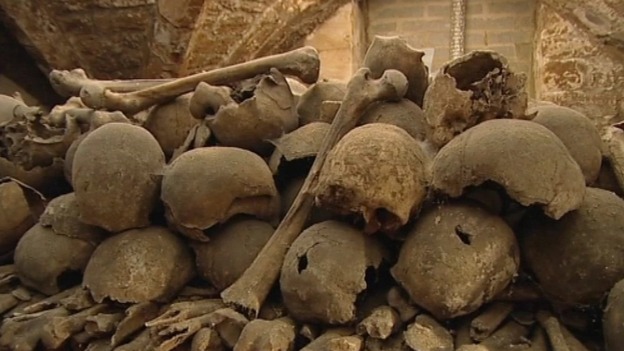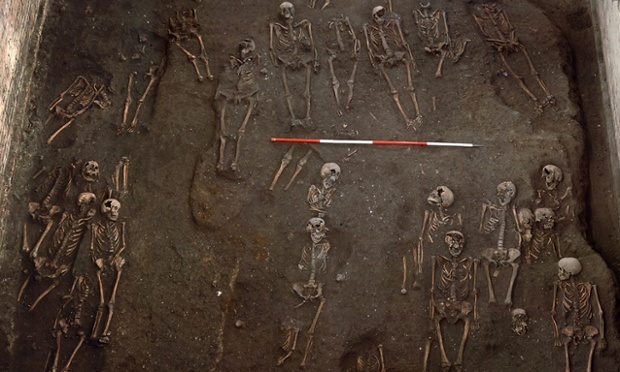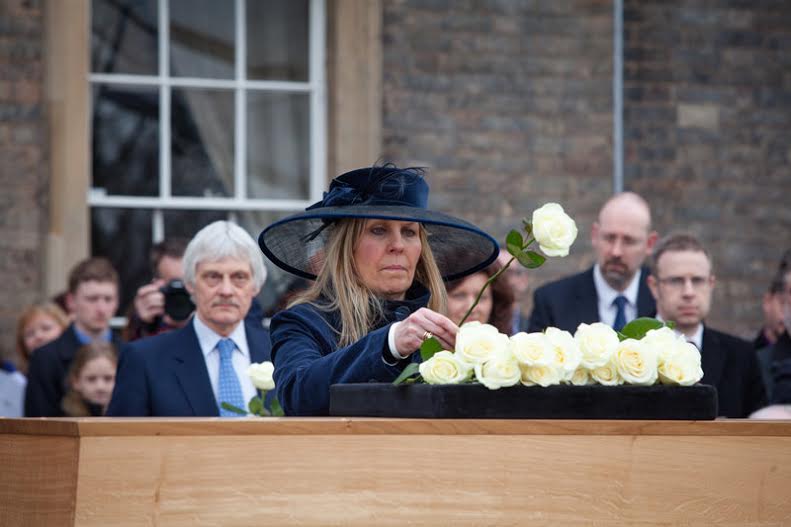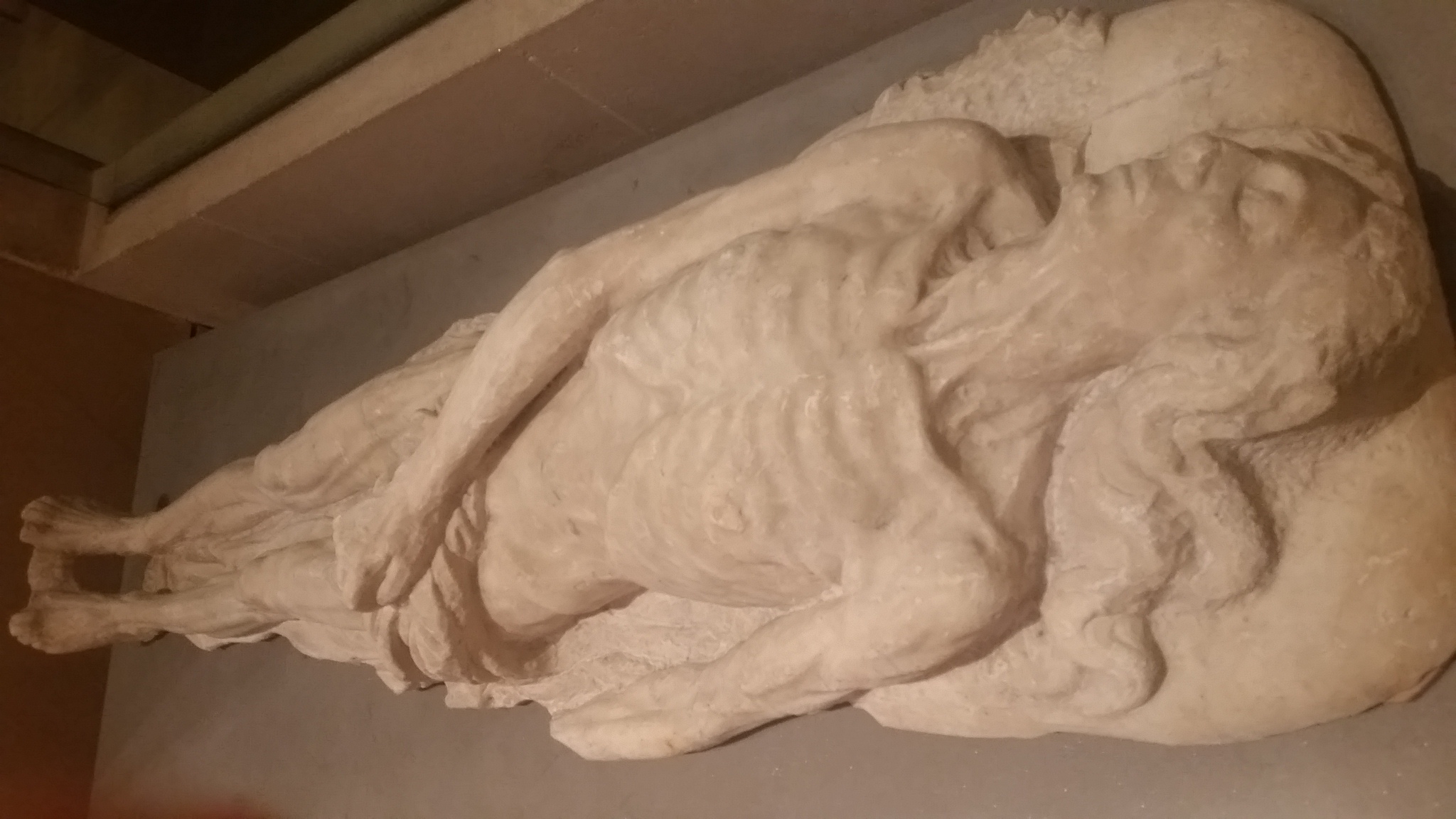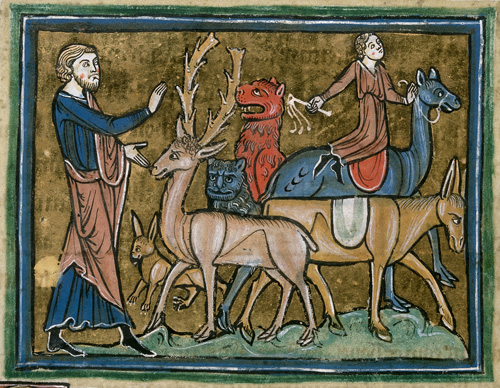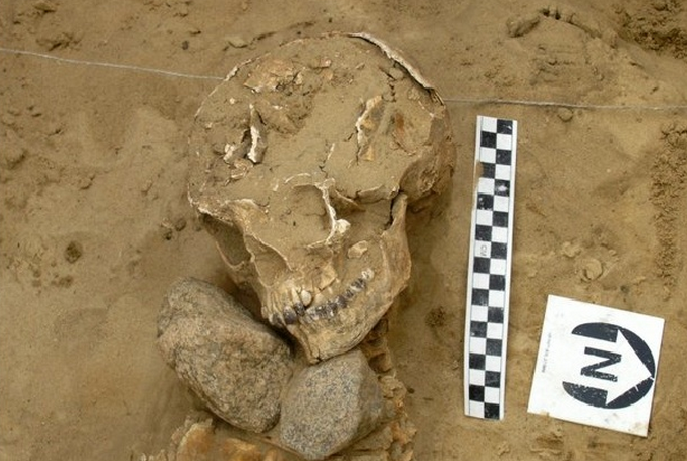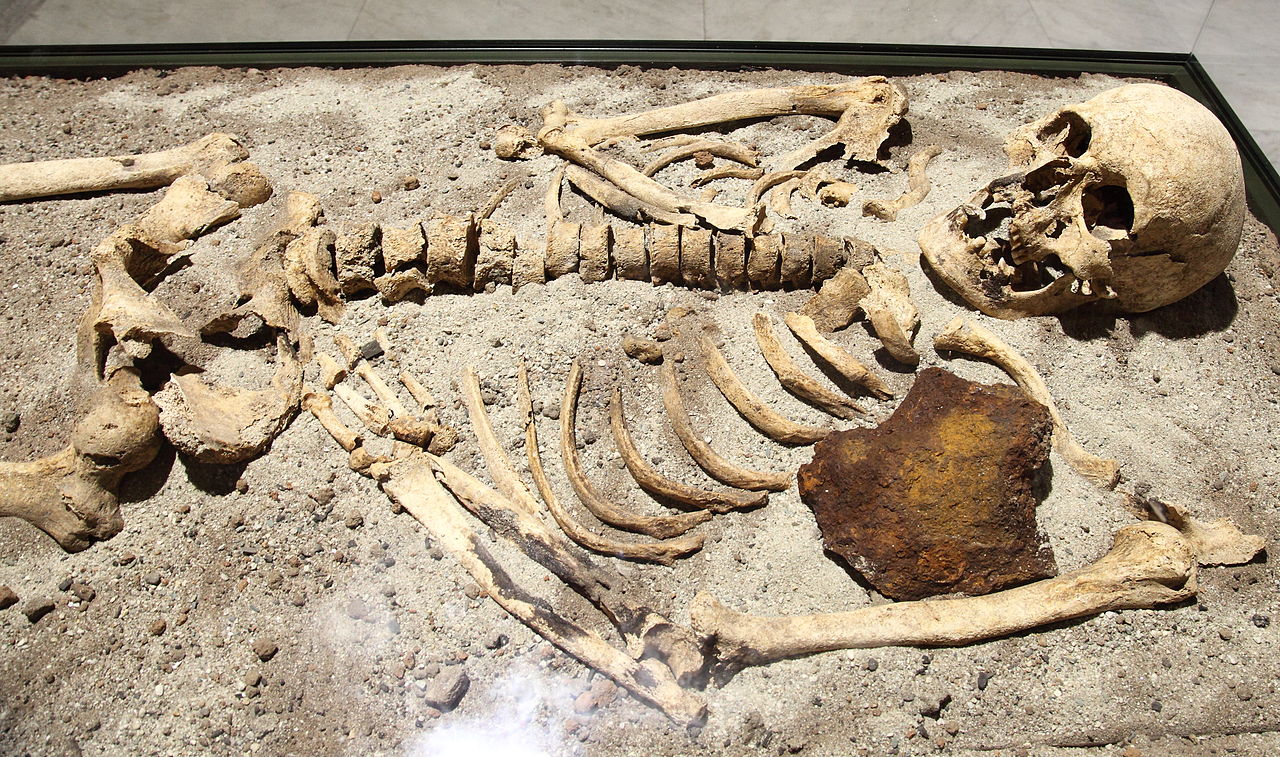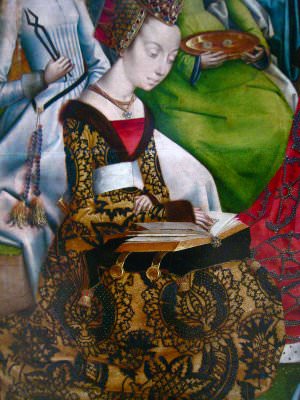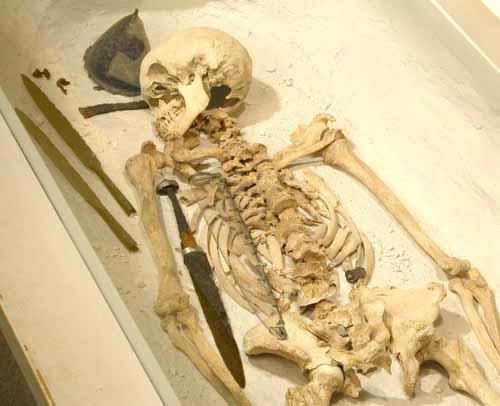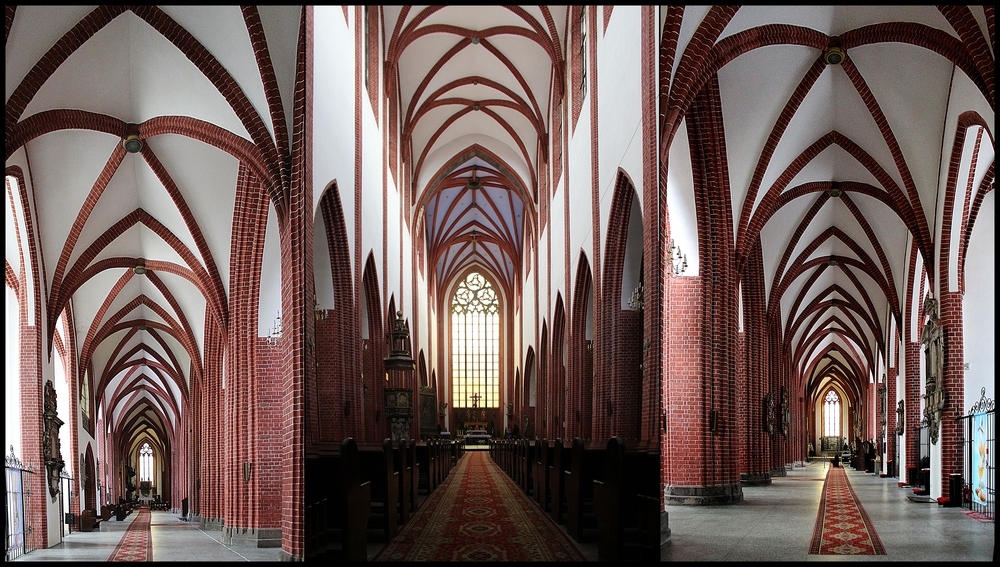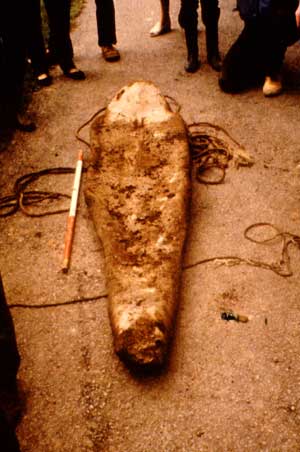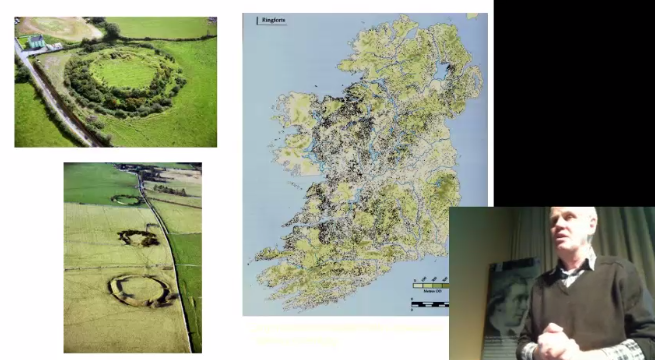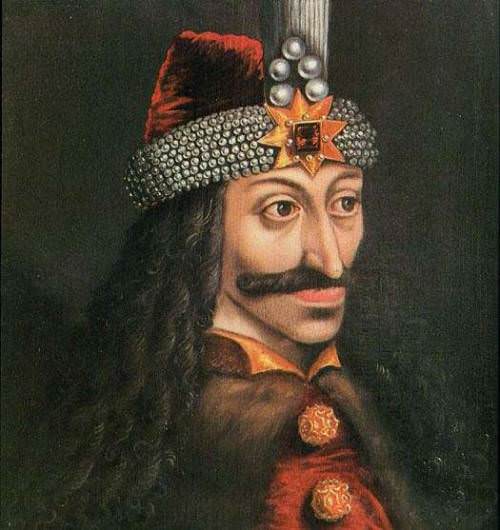Early Medieval Muslim Graves in France: First Archaeological, Anthropological and Palaeogenomic Evidence
Given all of these data, we propose that the skeletons from the Nimes burials belonged to Berbers integrated into the Umayyad army during the Arab expansion in North Africa.
Concerning Mass Graves: The use, development and identities within mass graves during the Scandinavian Iron Age and Middle Ages
In this Master thesis, my aim is to investigate, compare and discuss the practice of dealing with the dead and their war gear during the aftermath of a battle or an armed engagement.
Making the Medieval Relevant: Crossing Boundaries: Interdisciplinary Studies on Disease and Disability
A summary of a paper given by Professor Christina Lee at the University of Nottingham’s “Making the Medieval Relevant” Conference.
Fallen tree reveals medieval skeleton in Ireland
Last May a storm in northwest Ireland blew over a 215-year old tree. It also unearth an unusual find – the skeletal remains of a young man who lived nearly a thousand years ago.
A note on the regional distribution of pagan burials in Iceland
Comparison of the distribution of pagan burials in Iceland with medieval information about the number of farmers in different parts of the country allows a division of the country into three zones of low, medium and high frequency of pagan burials relative to the number of settlements.
The Afterlife of the Dead: Reform in Attitude Towards Medieval Burials, Corpses and Bones
The International Medieval Congress is taking place at the University of Leeds, I’m on hand this week to report on the conference. This blog post reports on my first session.
Chest burial: a middle Anglo-Saxon funerary rite from northern England
Chest burials, in which the body is interred in a wooden chest with a hinged lid, are one of the most characteristic funerary practices of the middle Anglo-Saxon period in northern England.
Having no Power to Return? Suicide and Posthumous Restlessness in Medieval Iceland
The purpose of this study is to examine cultural conceptions of the possible afterlives of suicides in medieval (ca. 1200– 1400) Iceland.
Deviant Burials: Societal Exclusion of Dead Outlaws in Medieval Norway
Deviant Burials: Societal Exclusion of Dead Outlaws in Medieval Norway By Anne Irene Riisøy COLLeGIUM: Studies across Disciplines in the Humanities and Social…
‘The Halved Heads’: Osteological Evidence for Decapitation in Medieval Ireland
This paper examines the osteological evidence for decapitation from 30 skeletal assemblages dated to the medieval period (6th to 16th century) from Ireland.
Over 1,000 People Discovered at Medieval Cemetery underneath the University of Cambridge
It is believed to be one of the largest graveyards of its kind found in Britain, with as many as 1500 people buried there.
Philippa Langley: The End of Richard III and the Beginning of Henry I
Amidst all the excitement, and the whirlwind that was Richard III’s reburial in Leicester, I managed to catch up with one of the world’s most famous Ricardians, ‘the Kingfinder’, Philippa Langley.
The Road to Richard: The Reburial of the Last Plantagenet
While there have been outcries over the pomp and circumstance surrounding Richard’s extravagant burial, there has also been a renewed sense of pride and upswing in popularity for this much maligned monarch.
10 Creepy Things to See at the Louvre That Are Better Than the Mona Lisa
If you’re an ancient historian, a medievalist, or early modernist, there are so many other amazing pieces and works of art a the Louvre other than these two tourist staples. Here is my list of cool, creepy, unusual and better than the Mona Lisa at the Louvre in Paris.
Nourishment for the Soul – Nourishment for the Body: Animal Remains in Early Medieval Pomeranian Cemeteries
Late medieval sources clearly refer to souls, which in traditional folk beliefs were periodically returning to feed and warm themselves by the fires made by the living. This kind of conception can be merged with Slavic eschatology. There is multiple evidence to confirm that belief some form of spirit or soul was spreading amongst the people, who in the early medieval period, bordered directly with Pomerania.
Time to Slay Vampire Burials? The Archaeological and Historical Evidence for Vampires in Europe
The aim of this paper is to look behind this popular image to consider the archaeological evidence for vampire burials.
Top 10 Strange Things done with the Medieval Dead
From piles of bones to embalmed hearts, with stories about mass graves and sleeping for hundreds of years, here is our top 10 list of strange things done with the medieval dead.
Fast and Feast – Christianization through the Regulation of Everyday Life
This article will illustrate that an important part of rulers’ wish to create a Christian society was the introduction of Christian legislation.
Women’s Devotional Bequests of Textiles in the Late Medieval English Parish Church, c.1350-1550
My investigation is set within the context of the current high level of interest in the workings of the late medieval parish.
Rethinking Hardown Hill: Our Westernmost Early Anglo-Saxon Cemetery?
This paper reassesses the early Anglo-Saxon assemblage from Hardown Hill, Dorset. Wingrave excavated the objects in 1916 but apart from his 1931 report, and Evison’s 1968 analysis, there has been little subsequent discussion.
The cultural identity of medieval Silesia: the case of art and architecture
The cultural identity of architecture and visual arts of the Middle Ages in Silesia can be analyzed in the following frameworks: 1.) the distinct formal features of local artwork; 2.) the specific content expressed through it. Macro factors (the type of materials and their availability) are important in architecture, as are architectural patterns and styles.
Death as an architect of societies Burial and social identity during the Viking Age in South-western Scania
In my opinion, the mono-cultural Viking Age is largely the product of one past social group, that had imposed on us their narration about the events, through production of tangible and durable monuments and sources. If analysis of the past should be of any value, it needs to be not only specifically spatially located, but also socially located.
The Identity of the St Bees Lady, Cumbria: An Osteobiographical Approach
USING AN OSTEOBIOGRAPHICAL approach, this contribution considers the identity of the woman found alongside the St Bees Man, one of the best-preserved archaeological bodies ever discovered. Osteological, isotopic and radiocarbon analyses, combined with the archaeo- logical context of the burial and documented social history, provide the basis for the identifica- tion of a late 14th-century heiress whose activities were at the heart of medieval northern English geopolitics.
Early Medieval Ireland: New Perspectives
Finbar McCormick examines the archaeological research being carried out in Ireland, including early medieval burials, monastic sites and ringforts.
Tomb of Vlad the Impaler may have been found in Italy
Researchers from Estonia believe that the remains of Vlad III, better known as Vlad the Impaler, are buried in a church in Naples, Italy.



